A human baby has 270 bones which decreases to 206 by adulthood. Decrease in the number of bones happens because some bones in the human body fuse together as you grow up.
Your bones are the strongest and the most important entity of your body. They provide a structural framework to your body. They serve to protect the important and delicate organs of your body. Bones along with skeletal muscles, tendons, ligaments and joints are responsible for your body movements.
Bones are known to be a store house of minerals like calcium and phosphorus. They house bone marrow that produce blood cells. Your bones must be protected from diseases or any other problems that affect their strength. This will help you enable a healthy life for coming years. 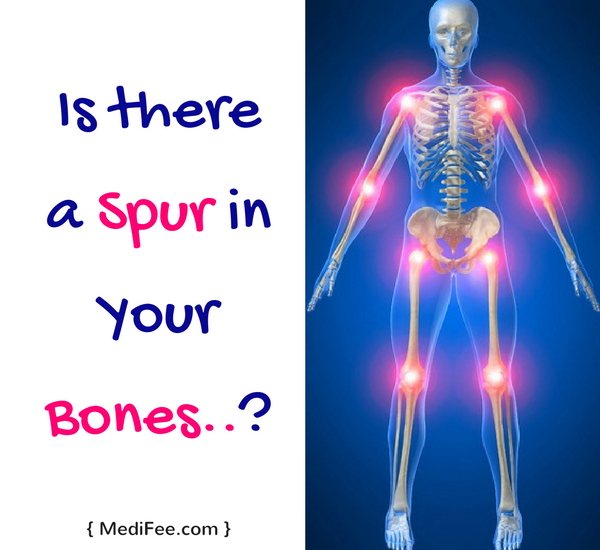
Just imagine if there are any abnormalities or disorders in the bones, as these could cause terrible effect on all of their functionalities. You must have heard of many bone diseases as they are getting common now-a-days. An unhealthy lifestyle is one of the reason for developing a bone disease. Your bad food habits like eating unhealthy, junk food, can easily influence your health. Not every one in our society is heath conscious. Most people do not have any idea of what the consequences will be if they keep consuming unhealthy trash food.
Even the youth today lack knowledge about right healthy food habits. There are good numbers of teenagers today who are suffering from diseases like osteoporosis, low bone density, bone cancer, arthritis, and other bone related disorders. Lack of physical activities is another cause that has affected one’s mobility. Bone spurs is one of the disorder that has arisen these days. Read ahead to explore more about bone spurs. Formation of a bone spur, causes, symptoms, and much more bone spur related information is given ahead to give you an idea regarding it.
What is a bone spur?
A bone spur is a small outgrowth of bone that forms along its edges. The word spur implies that these bony growths are poking and cause terrible pain. These bone spurs are medically termed as ‘osteophyte.’
Bone spurs can form in any bone but they are more common in the joints area, where two or more bones come together. 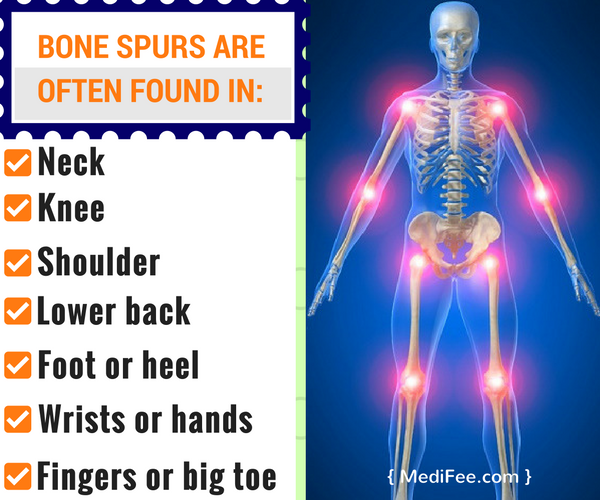 They also occur where muscles, ligaments or tendons connect to the bone.
They also occur where muscles, ligaments or tendons connect to the bone.
Bone spurs grow from any bone but they are more often found in the:
- Neck
- Wrists or hands
- Shoulder
- Lower back
- Fingers or big toe
- Knee
- Foot or heel
What are the types of Bone Spurs?
Bone spurs are classified into following types:
- Cervical Osteophyte: Cervical osteophytes are bone spurs that develop on any of the seven vertebrae in the cervical spine (neck) that involves the spine from the base of the skull to the base of the neck (C1-C7 vertebrae). When the ligaments and tendons around the bones and joints in the cervical spine are inflamed or damaged, they lead to formation of cervical osteophyte. The inflamed or the damaged tissues influence the surrounding bone growth. This causes deposition of new bone cells where bones normally would not grow.
- Lumbar Osteophyte: Lumbar osteophytes are bone outgrowths that develop on the joints in the lower back because of the degenerative changes to the spine. As the cartilage between the bones of the spine breaks down, extra movements in the joints of the spine take place. To compensate these extra movements, the body forms bone spurs on the surface of these joints.
- Anterior Osteophyte: Anterior Osteophytes are bone spurs that are formed on the frontal area (anterior) of the vertebrae of spine. The cervical spine is susceptible to wearing of the discs and joints; thus, development of anterior osteophytes is very common in this area of the spine.
- Posterior Osteophyte: Posterior Osteophytes refer to formation of osteophytes at the back of spine. These structures frequently form along the vertebral joints and often accompany the onset of osteoarthritis.
What causes a bone spur?
Bone spurs are the result of continuous stress or rubbing of the bone for a prolonged period of time. This can be due to osteoarthritis or inflammation such as tendinitis. There is a cartilage layer present along the edge of the bones which connects together to form a joint. This cartilage gets worn away in osteoarthritis condition as the bones rub directly against each other. Thus, with response to such stress and inflammation, new bones are formed.
For example, a bone spur on the heel can be due to a medical condition called plantar fasciitis. It is an inflammation of the fascia or the connective tissue present at the lower part of the foot where it attaches to the heel bone. Other example includes Diffuse idiopathic skeletal hyperostosis (DISH), which is an inflammatory disorder that leads to bone spurs in the spine. 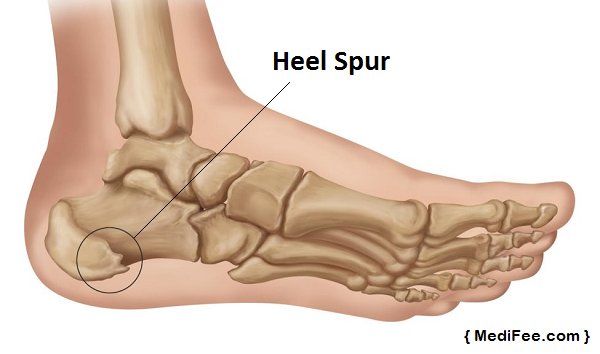
Joints that are subjected to trauma increase the likelihood of osteoarthritis and bone spurs later. This can be due of accidents that cause severe injuries to the joints. Also, overuse of joints or tendons that cause traumatic pressure on the joints.
Bone spurs can also be congenital. Individuals who have many family members with a bone spur condition are more likely to develop bone spur themselves. Diabetes is also a risk factor in development of bone spurs and osteoarthritis. The connection between these disorders is still unknown.
What are the signs and symptoms that show you have bone spurs?
There are many cases in which people may have bone spurs but they have no idea about it. However, if bones spurs rub against other bones or nearby tissues, they cause terrible pain or loss of normal joint motion. These symptoms occur for bone spurs developed in the hips, shoulders, feet, hands, knees.
A common complication of the shoulder is seen when bone spurs rub against the tendons or ligaments. This action leads to severe pain and tear in the rotator cuff.
Bone spurs that develop in the spine not only cause pain and restrict motion but also squeeze or pinch the nearby nerves or the spinal cord. 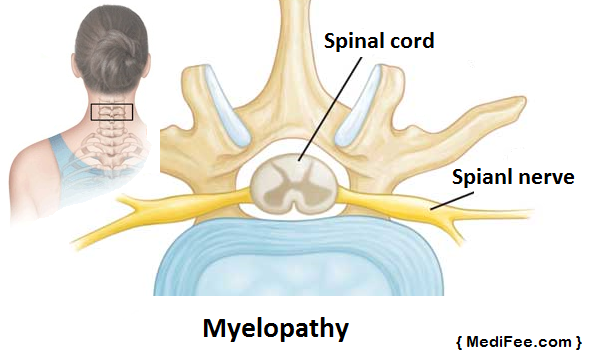 When the nerves in the spine are pinched, it is called as radiculopathy. Major causes of such a condition lead to pain, numbness, tingling or weakness in the arms or legs. Compressed spinal cord condition is called as myelopathy. It can result into balancing problems, pain and weakness.
When the nerves in the spine are pinched, it is called as radiculopathy. Major causes of such a condition lead to pain, numbness, tingling or weakness in the arms or legs. Compressed spinal cord condition is called as myelopathy. It can result into balancing problems, pain and weakness.
If you have an increased pain in your joints or loss in motion, you may have bone spurs. If these symptoms cause significant persistent pain, you should seek medical care in order to have it evaluated.
Whom should you consult if you are facing bone spurs issue?
Specialists like internists, rheumatologists, orthopedists, family doctors, or physical therapists can treat your bone spurs problem.
What are the diagnostic measures to examine bone spurs?
Diagnosing bone spurs can include various medical techniques. Your doctor will first begin with a physical checkup. Latter parts of the check up can include different tests. Radiology tests such as X-rays can be conducted to detect the formation and location of the spurs. An MRI scan or a CT scan can also be included for accessing the spinal cord in case of compression in the nerve or the spinal cord.
What are the treatment measures for bone spurs?
Most common treatment measure for bone spurs is medications. This is the initial stage of treatment. Inflammatory medications are used to reduce inflammation and relieve pain from bone spurs. 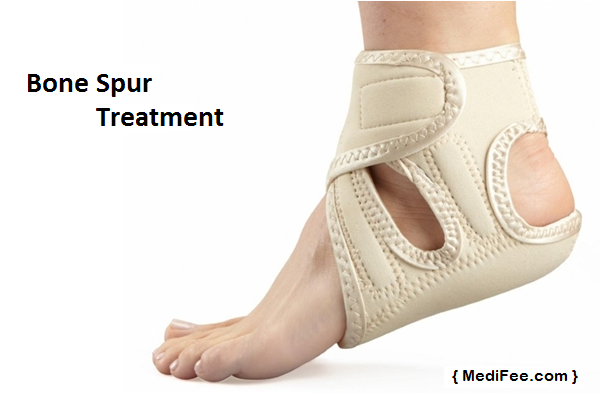
Some of the symptoms of bones spurs can be dealt with physical therapies. Physical therapies do not discard a bone spur condition, but they help strengthen the surrounding muscles and increase the motion in the joints. Some doctors recommend physical therapies, such as ice or cold packs, stretching exercise, ultrasound treatments or massages.
Depending on the joint involved with bone spurs, some cases are treated using steroid injections. Steroid injections like cortisone are injected into the joints to reduce pain from bone spurs. A spur in the hip or spine is injected using X-ray machine that helps in guiding the placement of these injections.
Other generic treatment methods include anti-inflammatory medications to relieve pain, or simple stretching exercise to perform at home, or other similar home remedies.
Is there a surgery to get rid of bone spurs?
Yes, there is a surgical method to discard bone spur issues. Doctors mainly adapt surgery option if the bone spur symptoms cannot be controlled with conservative treatments. The purpose of this surgery is to remove the bone spurs so that there is no pressure on the muscles, joints or nerves. The surgery may simply remove the bone spurs, but in complicated cases, the removal can be a part of a larger surgery like joint replacement surgery.
Prevention is better than cure. If you come across health condition like bone spur , it would be better if you fix it before it leads to any other complications. Live a healthy lifestyle. Avoid wrong and unhealthy food habits. Your health is one of the basic needs of your livelihood. Staying fit and healthy must be every individual’s priority.